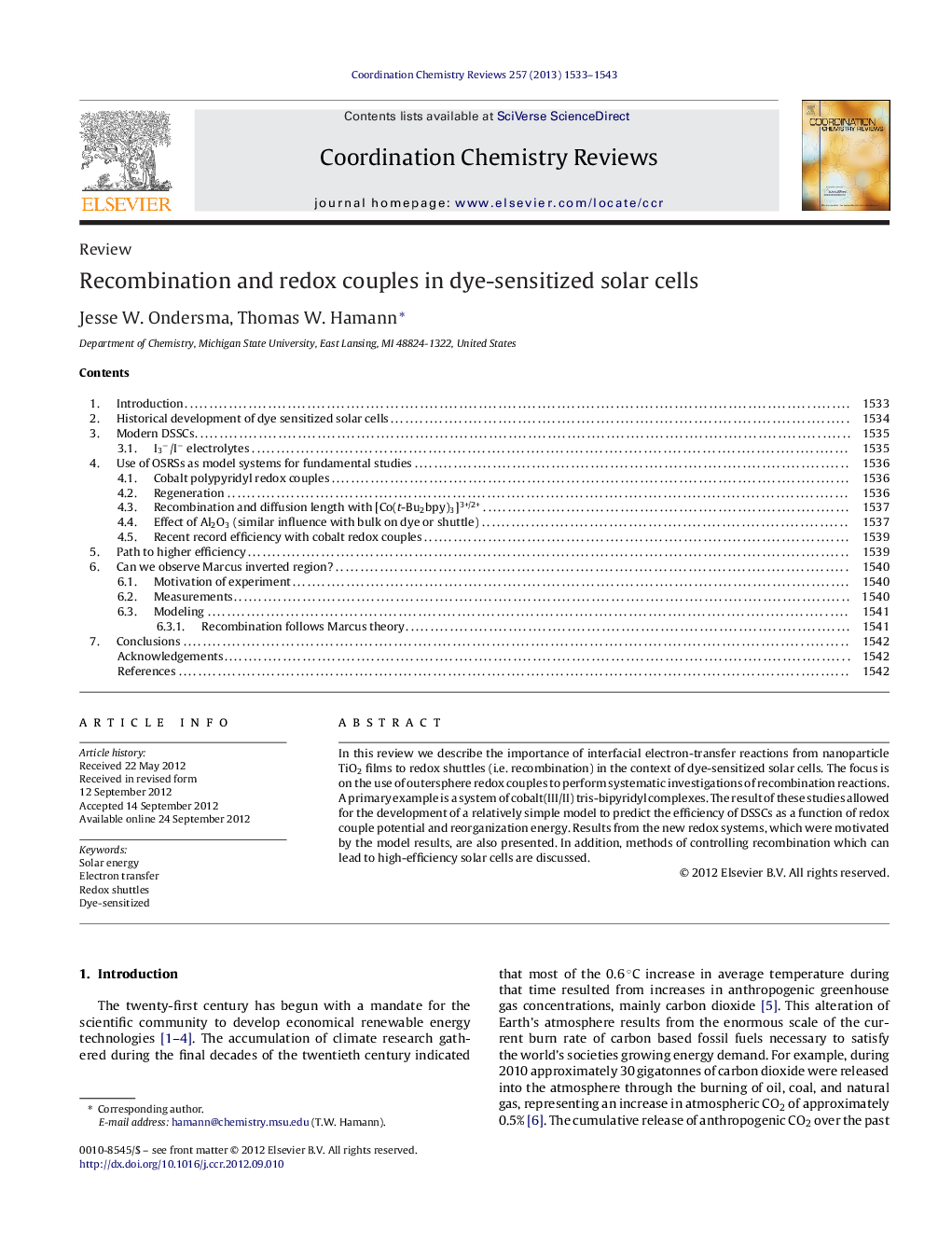| Article ID | Journal | Published Year | Pages | File Type |
|---|---|---|---|---|
| 1300382 | Coordination Chemistry Reviews | 2013 | 11 Pages |
In this review we describe the importance of interfacial electron-transfer reactions from nanoparticle TiO2 films to redox shuttles (i.e. recombination) in the context of dye-sensitized solar cells. The focus is on the use of outersphere redox couples to perform systematic investigations of recombination reactions. A primary example is a system of cobalt(III/II) tris-bipyridyl complexes. The result of these studies allowed for the development of a relatively simple model to predict the efficiency of DSSCs as a function of redox couple potential and reorganization energy. Results from the new redox systems, which were motivated by the model results, are also presented. In addition, methods of controlling recombination which can lead to high-efficiency solar cells are discussed.
